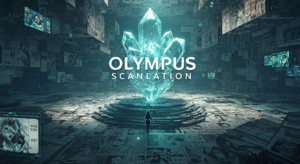Have you ever felt that magnetic spark during a team meeting — when ideas flow, creativity peaks, and suddenly, you’re on the brink of something great? That moment isn’t just luck — it’s the power of Gldyql in action.
In today’s collaborative workplaces, it’s not just about putting smart people in the same room. It’s about activating the group’s collective energy to create something greater than the sum of its parts. This is where Gldyql — an emerging concept in group dynamics and creative thinking — comes into play.
Whether you’re part of a startup, a corporate team, or a community initiative, mastering Gldyql can help unlock innovation, solve complex problems, and drive collective action in powerful new ways.
Let’s dive deep into the concept of Gldyql, how it works, and — most importantly — how to harness it effectively.
What Is Gldyql?
Gldyql (pronounced glid-ik-el) is a conceptual framework that explores the harnessing of group energy for ideation, creativity, and innovation. The term blends the ideas of group synergy, dynamic leadership, and qualitative collaboration, which are its core pillars.
In simpler terms, Gldyql is about:
- Tapping into the collective intelligence of a group
- Creating the right conditions for energy flow
- Fostering an environment where ideas naturally emerge, evolve, and improve
Think of Gldyql as the fuel behind the “aha moments” that happen not alone, but together.
Why Gldyql Matters in Modern Workplaces
As remote teams, cross-functional collaboration, and creative problem-solving become the norm, effective group dynamics are more important than ever.
Here’s why Gldyql is crucial in today’s work environment:
1. It Encourages Shared Ownership
Gldyql helps teams move from a “your idea vs. mine” mindset to a shared sense of purpose. This increases buy-in, motivation, and follow-through.
2. It Sparks Diverse, High-Quality Ideas
By blending perspectives from different roles, backgrounds, and thinking styles, Gldyql unlocks creative combinations that a single mind can’t reach alone.
3. It Builds Momentum
When group energy is harnessed well, teams get into a creative flow state — ideas build on each other, decisions come faster, and productivity soars.
The Science Behind Gldyql
Gldyql may sound abstract, but it’s backed by well-documented theories in neuroscience, psychology, and organizational behavior.
Mirror Neurons & Emotional Contagion
Humans unconsciously mimic the energy of others. Positive energy spreads, creating a contagious momentum in group settings. Gldyql leverages this to foster collaborative creativity.
Collective Intelligence
Research shows that groups with high emotional intelligence and balanced participation tend to solve problems better than even the smartest individuals.
Dynamic Feedback Loops
Gldyql involves continuous feedback — not just critique, but constructive enhancement, where ideas evolve in real-time.
The 5 Pillars of Gldyql
To harness Gldyql, teams must focus on five essential pillars that cultivate and sustain group energy.
1. Shared Intent
Everyone in the group should understand why they’re here and what success looks like. This creates a unified goal that channels energy in the same direction.
2. Psychological Safety
People need to feel safe to speak, question, and disagree. Gldyql thrives in spaces where vulnerability is welcome and judgment is suspended.
3. Focused Freedom
Structure is important — but so is freedom. The best Gldyql environments combine clear goals with room to explore creatively.
4. Diverse Input
Include voices from different departments, experience levels, and perspectives. Innovation is often born at the intersection of seemingly unrelated ideas.
5. Iterative Evolution
Don’t aim for perfection on the first try. Gldyql is about building on raw ideas, shaping them together over time.
How to Apply Gldyql in Your Organization
Ready to bring the power of Gldyql into your workflow? Here’s a step-by-step process to get started.
Step 1: Prime the Environment
Before your brainstorming or strategy session begins:
- Set the tone (open, exploratory, judgment-free)
- Clarify the goal or problem statement
- Encourage participation from everyone
📌 Pro Tip: A round of quick, light-hearted icebreakers helps unlock energy fast.
Step 2: Create Space for Divergent Thinking
Let ideas fly — even the wild ones. Avoid premature judgment or narrowing down too early.
Encourage:
- Brainwriting instead of only speaking out
- Using visuals, sketches, or sticky notes
- Temporary “idea parking lots” for tangents
Step 3: Use Guided Collaboration Techniques
Introduce tools that channel group energy constructively:
- Mind mapping to connect themes
- SCAMPER method to modify existing ideas
- Round-robin brainstorming to ensure equal voice
📌 Pro Tip: Use collaborative tools like Miro, Notion, or Figma for remote Gldyql sessions.
Step 4: Cluster and Converge
After free ideation, group similar ideas and start narrowing down.
- Vote on most promising directions
- Combine complementary ideas
- Assign teams to explore concepts further
This is the refining stage of Gldyql — turning energy into actionable insights.
Step 5: Reflect and Evolve
Wrap up with a reflection session:
- What worked well?
- What drained energy?
- What will we do differently next time?
This feedback loop enhances future sessions and keeps the Gldyql flow strong.
Real-World Applications of Gldyql
The concept of Gldyql isn’t just for brainstorming sessions. It can be applied in many areas:
Corporate Innovation Labs
Teams working on next-gen products thrive when Gldyql principles drive idea development and team synergy.
Startups
Early-stage teams benefit from agile, idea-rich collaboration environments — exactly where Gldyql excels.
Creative Agencies
From branding to UX design, agencies use Gldyql-inspired sessions to unleash collaborative creativity.
Education & Non-Profits
Workshops and classrooms that follow Gldyql principles see higher engagement, ownership, and learning outcomes.
Common Challenges in Applying Gldyql
Even the best teams face roadblocks. Here’s how to handle them:
Dominating Voices
Solution: Use facilitation tools that give everyone equal input (like anonymous digital submissions).
Idea Overload
Solution: Time-box sessions and include convergence phases to filter and prioritize.
Lack of Follow-Through
Solution: Assign action items during sessions and set clear accountability checkpoints.
Final Thoughts
In a world that demands innovation, adaptability, and connection, Gldyql is more than just a technique — it’s a mindset. It reminds us that the best ideas don’t come from lone geniuses, but from diverse, energized teams working together with purpose.
By tapping into the group energy that already exists, and shaping it intentionally, you can turn any collaboration into a creative powerhouse.
So the next time you’re in a room (physical or virtual), ask yourself:
Are we just talking — or are we activating Gldyql?
🔍 Frequently Asked Questions (FAQ)
❓ Is Gldyql a software or tool?
No, Gldyql is a conceptual framework. It can be supported by collaboration tools but is more about mindset, team setup, and facilitation.
❓ Can Gldyql be used in remote teams?
Absolutely! In fact, with the right tools and intentional setup, Gldyql works brilliantly in remote and hybrid environments.
❓ How long should a Gldyql session last?
It depends on your goal. Some sessions last 30 minutes, others span half a day. The key is energy management and clear facilitation.
❓ What’s the difference between Gldyql and regular brainstorming?
Gldyql is more structured and intentionally taps into emotional, social, and cognitive group energy — making it more than just idea sharing.
❓ Who can facilitate a Gldyql session?
Anyone can! Ideally, someone with basic facilitation skills and a neutral position (like a team lead, project manager, or external coach).




